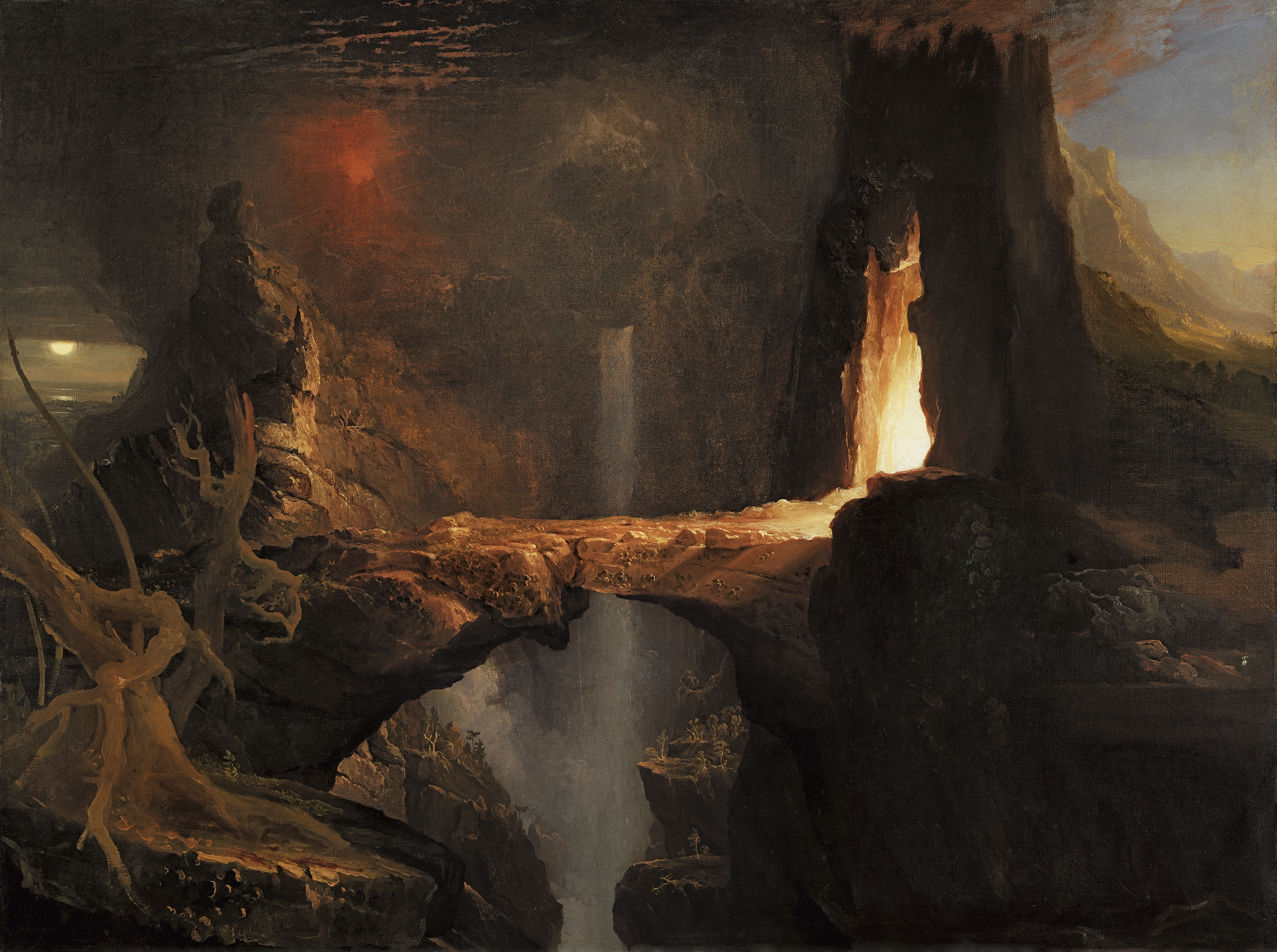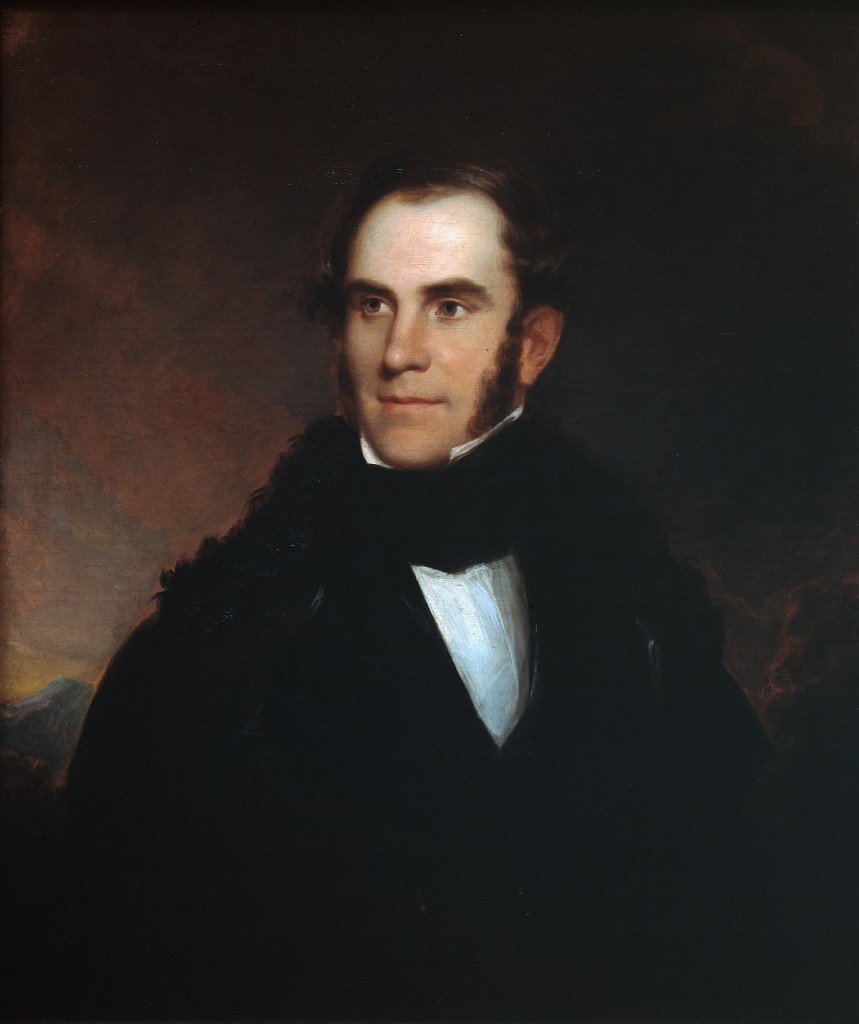 |
Expulssion, Moon and Firelight
Thomas Cole
Oil on Canvas
1827 |
Expulsion. Moon and Firelight by Thomas Cole was created in 1828 by Thomas Cole who is considered to be the founder of Northern American landscape painting. The waterfall and bridge produce a cross shape in the composition, which is symmetrically arranged. Paradise is on the right, and the world after the Fall is on the left. Stated in Museo Nacional, "The whole landscape, which seen by a favorable light, and in a genial temperature, had been found so lovely, appeared now like some pictured allegory of life, in which objects were arrayed in their harshest by truest colors, and without the relief of any shadowing..., the bold and rocky mountains were too distinct in their barrenness, and the eye sought relief, in vain, by attempting to pierce thee illimitable void of heaven, which was the shut to its gaze by the dusky sheet of ragged and driving vapor" (Museo 2). The stark contrast between the blazing light inside the arch and the shadows around it emphasizes the scene's magnificent quality. Cole was concerned about the consequences of the United States' growing industrialization, and here he shows the North American landscape as a metaphor for Eden.
 |
| Thomas Cole |
The land scape that had inspired Thomas Cole was when he saw a suspended bridge in New Hampshire in 1827; the scene's sole characteristics are the environment and the elements of creation such as the stone bridge, the waterfall, the volcano, and the moon. His excursions through the granite formations of New Hampshire's White Mountains served as inspiration for this painting. Stated in the Museo Nacional, "Cole drew inspiration for the bridge that marks the division between the world of paradise and wild, chaotic nature from a landmark in the white mountains called "the Bridge of Fear..." (Museo 3). These paintings set the tone for Cole's new, more elevated landscape style. Firelight and the Moon Cole saw landscape painting as a tool for communicating theological or moral implications, God's power over nature, and man's defenselessness towards it.
Starting with this aspect, Cole used his imagination to build the scene for Adam and Eve's expulsion. The Garden of Eden in Fort Worth represents the world before the fall, with an ideal environment that has never been seen before dominating the composition. After being exiled from Paradise, Adam and Eve cross a rocky bridge into a chaotic natural setting in the Boston Museum of Fine Arts' Expulsion. Instead of the route to exile, Cole depicts the stone bridge as the gateway to Paradise, which he paints with light and fire, portraying Eden shining in the darkness. Cole compared the untamed American terrain to Eden in terms of its potential to impart God's work of creation. What I had experienced when first glancing at the art was how much of a landscape it had covered and the difference between both left and right. Just by looking at the painting I could infer that it would have some relation to the bible as it depicted a two differenthttps://www.museothyssen.org/en/collection/artists/cole-thomas/expulsion-moon-and-firelight distinct world such as heaven and hell.
Work Cited:
Nubla. Museo Nacional Thyssen-Bornemisza. (n.d.). Retrieved December 17, 2021, from https://www.museothyssen.org/en/visit/thematic-tours/nubla



No comments:
Post a Comment